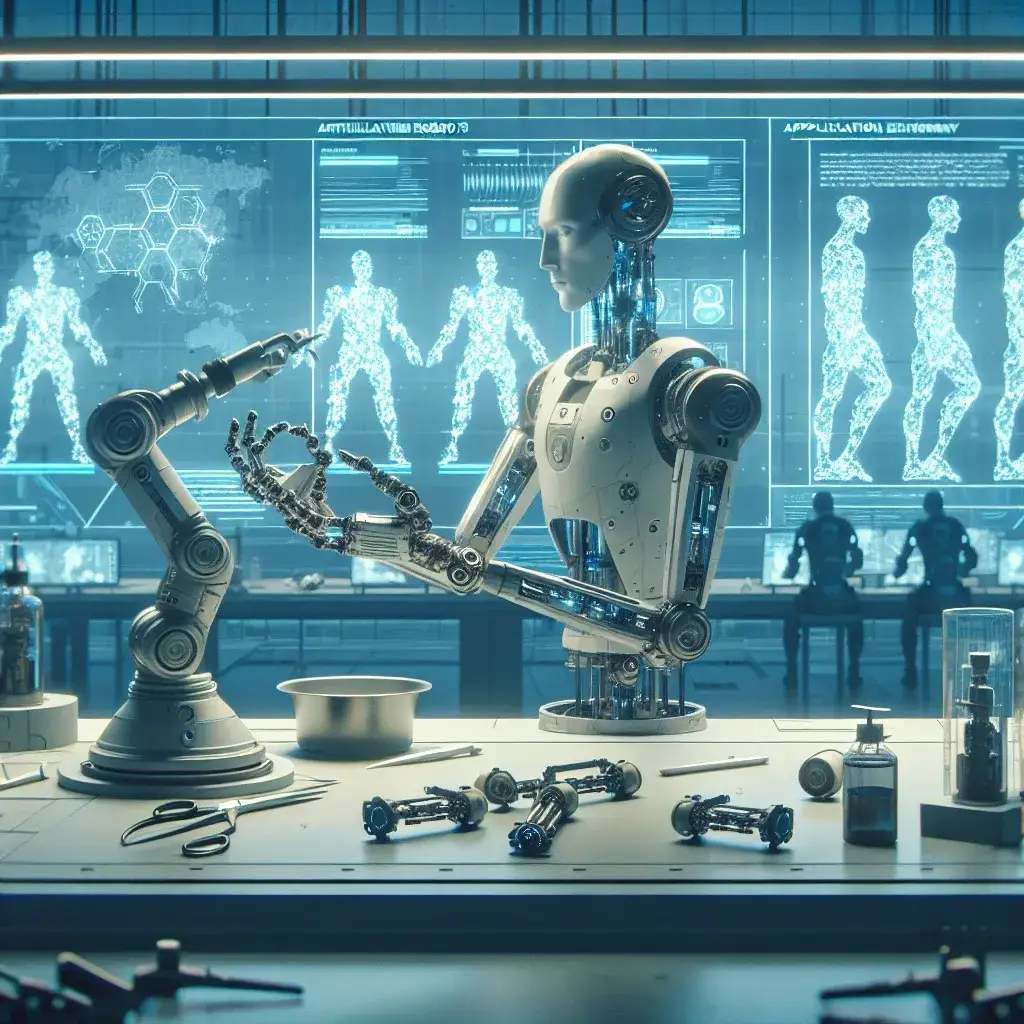Introduction
The advancement of technology has transformed many fields, and the intersection of artificial intelligence (AI) and robotics is one of the most promising areas. In particular, the development of modular prosthetics for battlefield use has garnered significant attention. This article will explore how AI-powered robotics are shaping the future of prosthetics, focusing on their application in military contexts.
The Need for Modular Prosthetics in the Battlefield
In military operations, injuries can occur in various ways due to the unpredictable nature of combat situations. The demand for effective prosthetics that can adapt to the needs of injured soldiers is paramount. Modular prosthetics offer a solution by allowing for rapid customization and adjustment based on the individual’s requirements.
Understanding Modular Prosthetics
Modular prosthetics are designed to be flexible and adaptable. This means that different components can be interchanged depending on the environment or activity level of the user. For instance, a soldier may require a different foot for rugged terrain compared to urban environments. AI-powered robotics enhance this adaptability by integrating smart technology that learns from the user’s movements and adjusts accordingly.
Advantages of AI-Powered Modular Prosthetics
- Adaptability: AI can analyze the user’s movements in real time and provide feedback to optimize performance.
- Enhanced Functionality: Modular design allows for easy swapping of parts, enabling soldiers to adapt to changing conditions.
- Improved Recovery: Customizable prosthetics can lead to better rehabilitation outcomes and faster recovery times.
- Data-Driven Insights: AI can collect data on usage patterns, helping developers improve future designs.
Historical Context
The use of prosthetics in military history dates back centuries, with records indicating their use as far back as the Civil War. Initially, prosthetics were rudimentary and often uncomfortable. However, the evolution of materials and technology has significantly improved their functionality. The introduction of AI and robotics marks the next leap in this evolution, enabling a future where prosthetics are not just passive devices but active participants in a soldier’s recovery and rehabilitation process.
Current Developments in AI-Powered Prosthetics
Various organizations and companies are leading the charge in developing AI-powered modular prosthetics. For example, initiatives funded by the military aim to integrate advanced robotics with AI algorithms that enhance sensory feedback. This technology allows users to experience a sense of touch, significantly improving their ability to interact with their environment.
Case Study: The DARPA Revolution
The Defense Advanced Research Projects Agency (DARPA) has been at the forefront of robotic prosthetics research. Their programs focus on creating devices that can mimic natural limb movement and improve soldier survivability on the battlefield. One notable project is the Advanced prosthetic limb project, which combines AI with robotics to create limbs that offer unprecedented control and adaptability.
Challenges and Limitations
Despite the incredible advancements in AI-powered prosthetics, challenges remain. One major issue is the cost associated with developing and deploying these technologies. High manufacturing costs can limit accessibility for many injured service members. Additionally, there are concerns regarding the reliability of AI systems in high-pressure situations, where failures could have dire consequences.
Ethical Considerations
As with any emerging technology, ethical considerations must be addressed. The use of AI in healthcare, particularly in prosthetics, raises questions about privacy and data security. Ensuring that user data is protected while still helping to advance technology is a delicate balance that must be maintained.
Future Predictions
The future of AI-powered modular prosthetics in military applications looks promising. As technology continues to evolve, we can expect the following trends:
- Increased Personalization: Future prosthetics will likely feature advanced AI algorithms that tailor the devices to individual users even more closely.
- Integration with Augmented Reality: The combination of AR and prosthetics can provide soldiers with critical information about their surroundings, enhancing situational awareness.
- Collaboration with Other Technologies: We may see more integration of prosthetics with other advancements, such as exoskeletons, to provide enhanced mobility and strength.
The Role of Military Innovation
The military’s push for innovation has historically been a catalyst for advancements in medical technology. As AI and robotics continue to develop, we can expect military applications to lead the way in creating solutions that will eventually benefit civilian populations as well.
Conclusion
AI-powered robotics and modular prosthetics are revolutionizing the way we think about rehabilitation and recovery for soldiers injured on the battlefield. With their adaptability and enhanced functionality, these devices promise to improve the quality of life for many. While challenges remain, the commitment to innovation and ethical considerations will guide the future of this exciting field. The intersection of AI and prosthetics not only holds the potential to transform military medicine but could also pave the way for advancements that will benefit countless individuals in civilian life.

